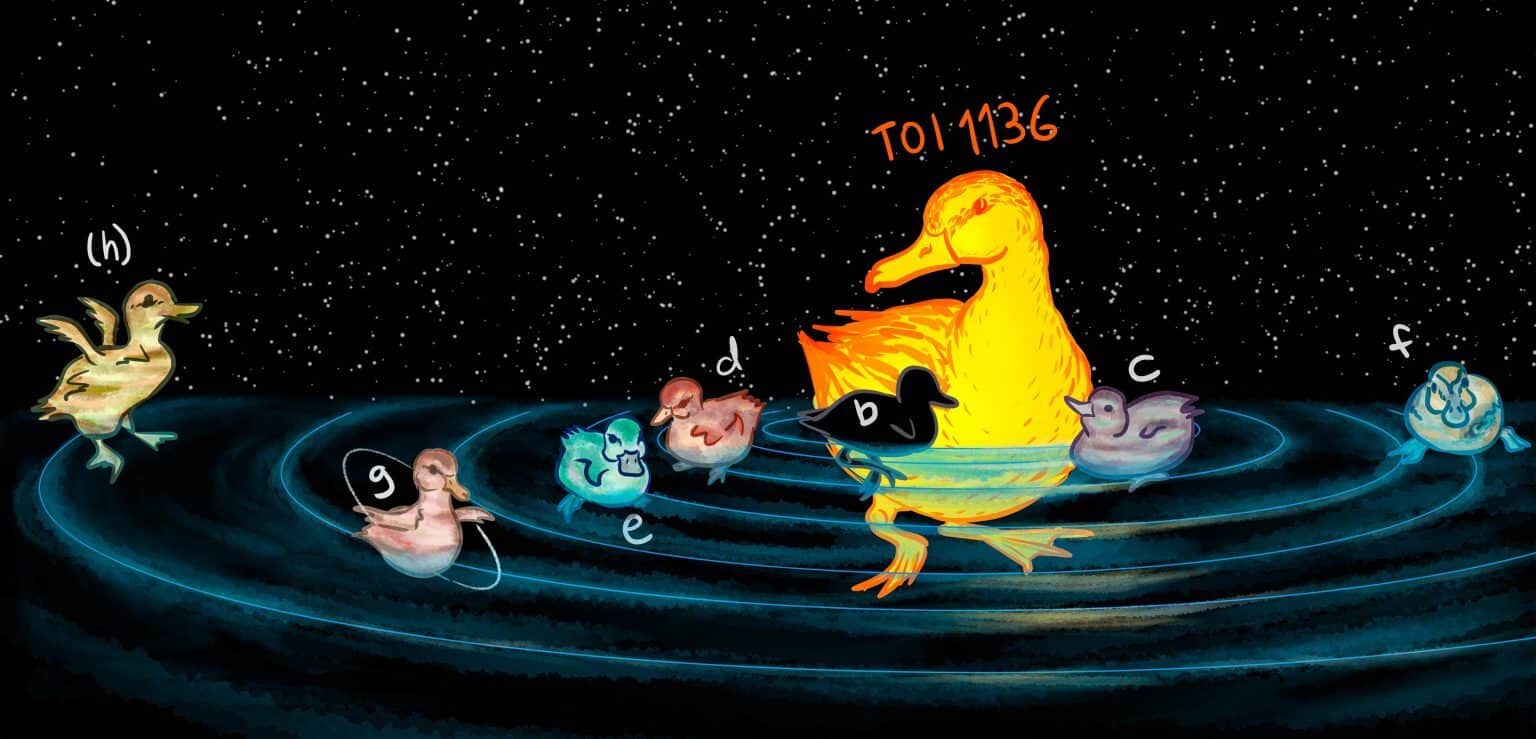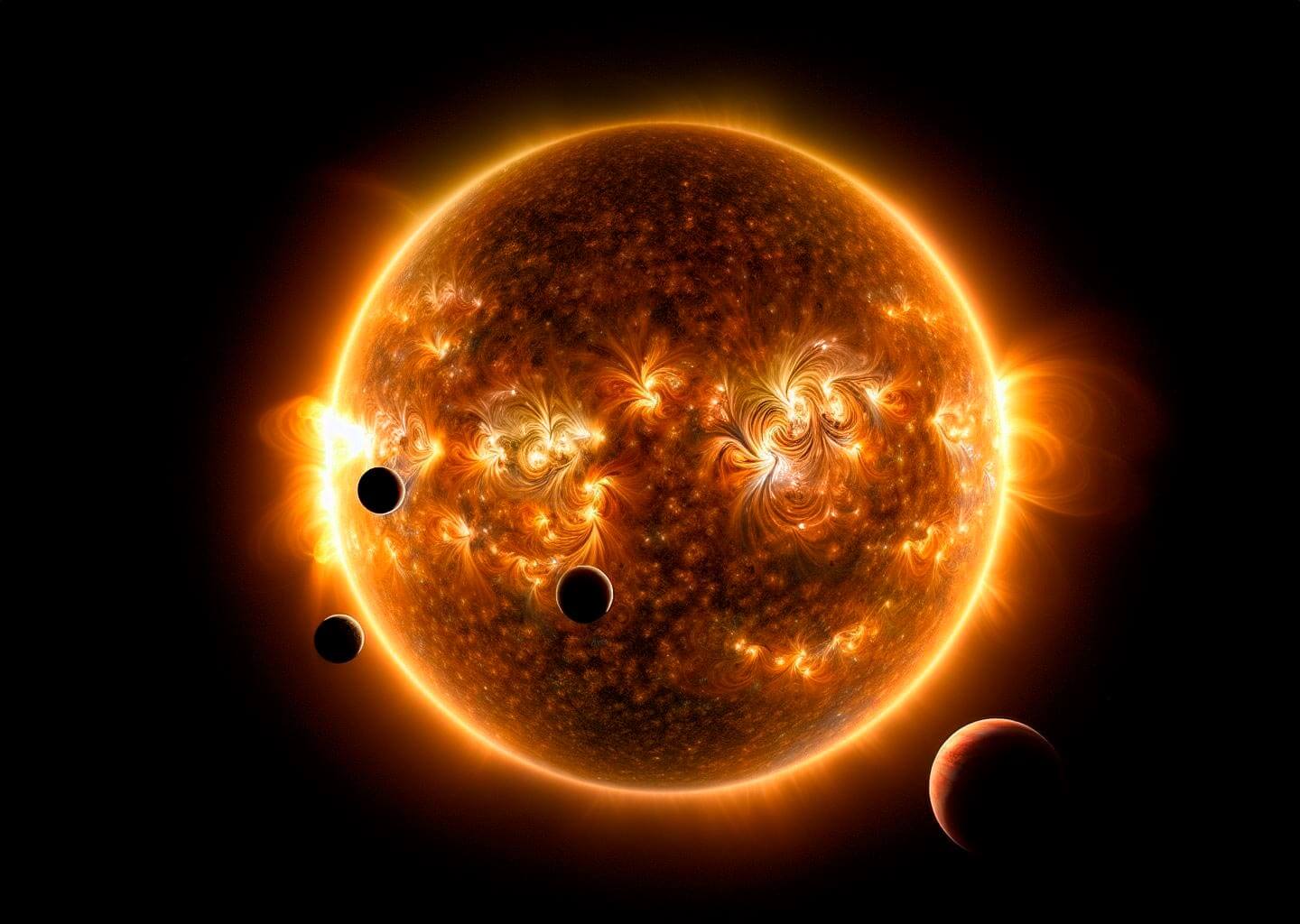A newly discovered solar system with six confirmed extrasolar planets and a possible seventh increases astronomers' knowledge of star formation and evolution

A newly discovered solar system with six confirmed extrasolar planets and possibly a seventh is increasing astronomers' knowledge of star formation and evolution. A team led by researchers from the University of California, Irvine, who relied on a worldwide database of observatories and instruments, gathered the most precise measurements to date of the masses, orbital properties and atmospheric properties of the extrasolar planets.
The researchers share the results of a survey TESS-Keck provides a comprehensive description of the planets orbiting TOI-1136, a dwarf star in the Milky Way galaxy more than 270 light-years from Earth. The study is a follow-up to the team's observation of the star and planets in 2019 using data from NASA's Transiting Extrasolar Planet Survey Satellite (TESS). That project provided the first estimate of the masses of the planets by measuring the changes in the timing of the transits, which express the gravitational force that orbiting planets exert on each other.
In the latest study, the researchers combined TTV data with an analysis of the star's radial velocity. Using a telescope in California and a spectrometer in Hawaii, they were able to detect slight changes in the star's motion through the red and blue shift of the Doppler effect - which helped them determine the results of the planets' masses with unprecedented precision.
To get such precise information about the planets in this solar system, the team created computer models using hundreds of radial velocity measurements layered over the TTV data. Lead author Cory Byrd said combining these two types of measurements yielded more knowledge about the system than ever before.
"It required a lot of trial and error, but we are very pleased with the results after developing one of the most complex planetary system models in the extrasolar planet literature to date," Bird said.
The large number of planets was one of the factors that inspired the team of astronomers to conduct further research, according to co-author Paul Robertson.
"From our point of view, TOI-1136 had a great advantage from a research point of view, because if the system has many planets we can take into account the effects of the evolution of the planets that depend on the host star, and this helps us focus on individual physical mechanisms that caused the planets to have the properties they have ", said.
Robertson added that when astronomers try to compare planets in separate solar systems, there are many variables that can change because of the different properties of the stars and their location in different parts of the galaxy. When examining planets in the same system one can examine planets that had a similar history.

In stellar terms, the TOI-1136 solar system is young, only 700 million years old, another feature that attracts planet hunters. Robertson says that young stars are "both special and difficult to work with" because they are very active. Magnetism, sunspots, and solar flares are more common and stronger at this stage of the star's development, and the resulting radiation blasts and shapes the planets, affecting their atmospheres.
More of the topic in Hayadan:
- NASA Announces 1,284 New Extrasolar Planets - Largest Harvest to Date
- Hubble observes changes in the atmosphere of a planet outside the solar system
- A "Tatoine-like" planet orbiting two suns has been discovered
- Stellar surprise: a fountain of youth at the center of our galaxy "should be impossible".

One response
I am beginning to fear that the author of the article traveled with Yohai Sponder in the Netherlands.
Yo my brother, do you realize it's a duck, and there's another duck there, and a duckling and they're going around in circles around mother duck. Yo my brother you don't understand, there is a situation you are going to bring Bamba.
PS: h is the cutest aye, what a baby!